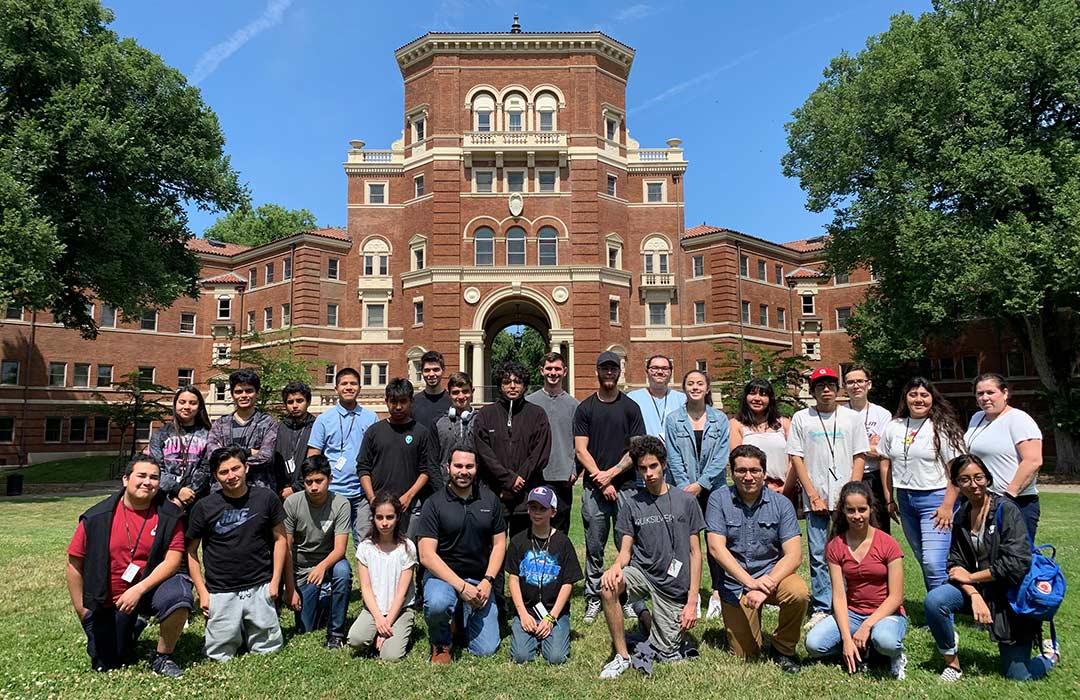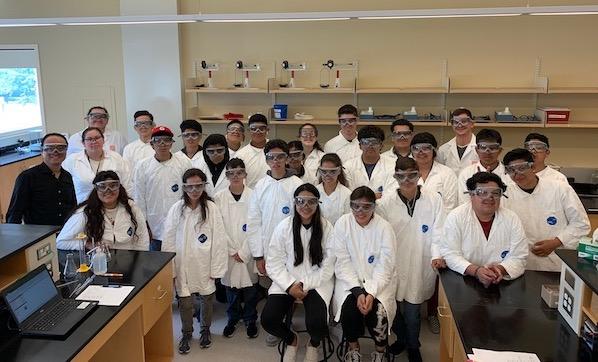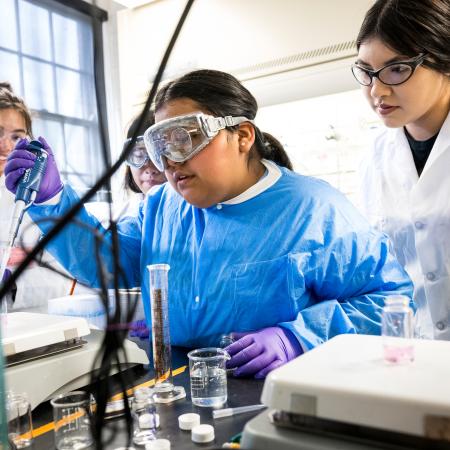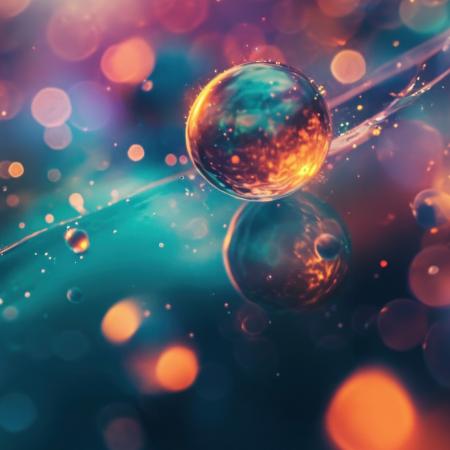For the first time, campers stayed in Weatherford dormitory, a landmark building on campus renowned for its aesthetic design and spacious, light-filled quarters. After settling into their dorm rooms Saturday morning, campers enjoyed an energetic welcome from professor of chemistry May Nyman, who shared her research on radioactivity, debunking common myths about nuclear chemistry and answering a variety of pressing student questions. Campers examined actual (and harmless) radioactive samples from Nyman’s lab and measured the radioactivity of everyday objects including fire-alarms and the aforementioned bananas.
After stretching their legs on a campus tour, students delved into two colorful labs. The first was designed to mirror what first-year college students experience in a general chemistry class. Campers learned how to use a spectrophotometer to analyze the type and amount of food dye present in different flavors of Gatorade, and successfully blended red and blue dyes to recreate the exact purple shade of Rain Berry Gatorade.
“I learned a lot of new things,” said one camper, “and I want to learn more.”
The second lab was a tour of the very spot in Gilbert Hall where Mas Subramanian, Milton Harris Chair Professor of Materials Science, discovered the first new pigment of blue in over two centuries, a find which attracted worldwide attention and inspired a new Crayola crayon, Bluetiful.
In late afternoon, students enjoyed free time. Many campers and chaperones joined an impromptu game of soccer along with several current OSU students, while others played air-hockey, foosball, pool, and board-games in the basement of Weatherford.
One of the highlights of the camp every year is a science-themed game of Jeopardy replete with rousing demonstrations. This year’s game included old favorites such as Elephant’s Toothpaste (an explosive, foamy reaction caused by the catalytic decomposition of hydrogen peroxide) and the new Burning Rainbow, a colorful display of flames caused by the burning of different salts commonly used in fireworks. The night culminated in the making and eating of liquid nitrogen vanilla ice cream in the atrium of Linus Pauling Science Center (LPSC), the Jeopardy winners enjoying the first taste.
After their first overnight ever in a college dorm, campers awoke to a Sunday packed with educational fun. Fang gave a short presentation on physical chemistry and the state-of-the-art molecular movie technology developed at Oregon State. Next, in Fang’s ultrafast spectroscopy lab on the second floor of LPSC, students were dazzled by the forest of optics on the air-float laser table, asking many questions as they saw how shooting lasers for only a millionth of a billionth of a second can reveal the molecular mechanisms that power everything from human vision to jellyfish luminescence, calcium biosensors and solar cells.





